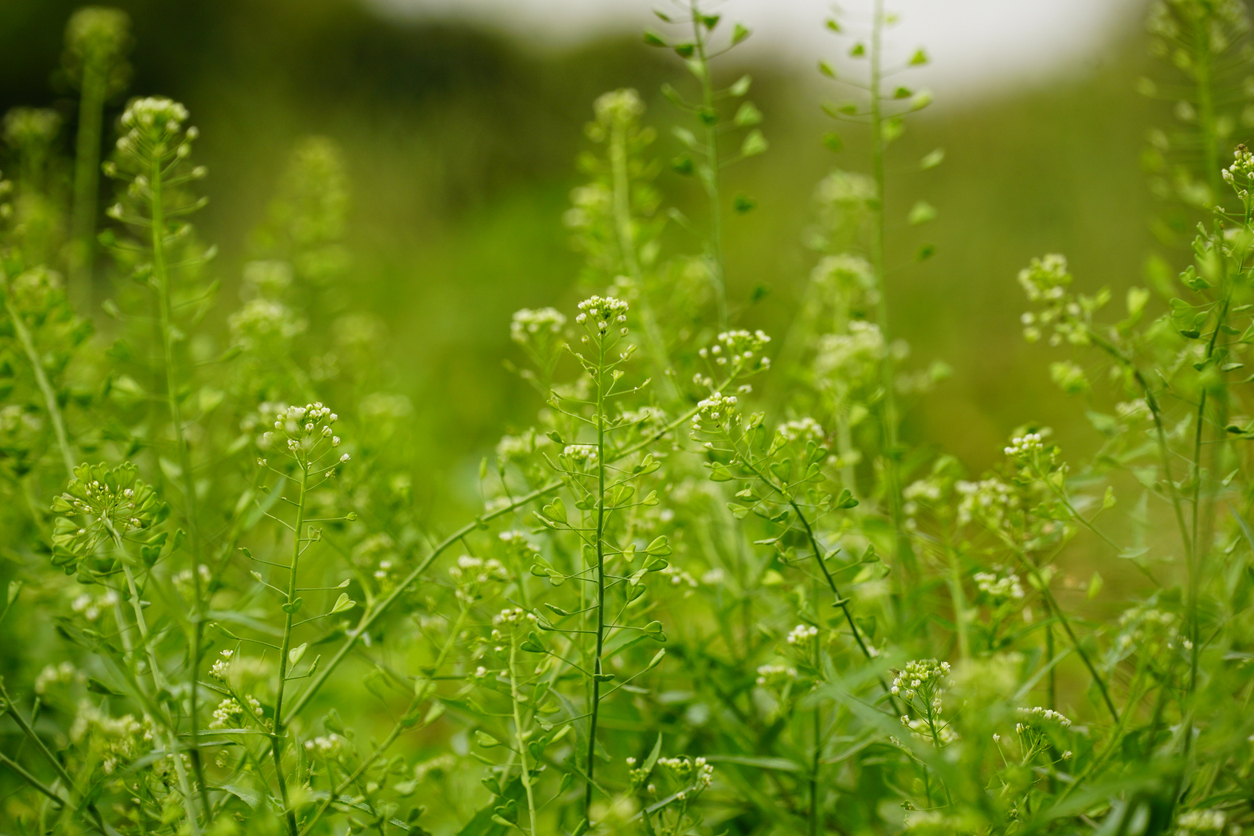
Camelina Engineered to Produce High Levels of Natural Astaxanthin
June 11, 2025| |
A team of biotechnologists from the United States and the United Kingdom led by Prof. Edgar Cahoon, director of the Center for Plant Science Innovation at the University of Nebraska-Lincoln have successfully engineered the oilseed crop Camelina sativa to produce high levels of astaxanthin, a valuable red antioxidant used to color farmed salmon and shrimp, using plant-derived genes rather than bacterial pathways.
The recent findings offer a commercially viable alternative to synthetic astaxanthin, which is currently produced through costly chemical synthesis or from limited natural sources, such as algae. Astaxanthin is a red pigment belonging to a group known as ketocarotenoids, which are prized not only for their coloring properties but also for their exceptional antioxidant capacity. These pigments are not naturally occurring in most crops, but the researchers borrowed genes from the scarlet flax flower (Adonis aestivalis) to introduce a new ketocarotenoid biosynthesis pathway into Camelina seeds.
This plant-derived pathway is more efficient and cleaner, converting nearly all the precursor beta-carotene into ketocarotenoids, with astaxanthin making up over a third of the total, around 47 micrograms per gram of seed. The extracted oil was notably more resistant to oxidation, which could be useful for applications in the food industry for oleogels in plant-based products. More importantly, the modified plants showed no stunting or signs of stress in the field, and the results were replicated across multiple growing seasons in both the US and UK.
For more details, read the news release from Rothamsted Research.
| |
You might also like:
- Defra Allows Field Trial of GM Camelina in Rothamsted
- Scientists Engineer Maize to Produce Astaxanthin
- Researchers Develop Astaxanthin-rich Maize
Biotech Updates is a weekly newsletter of ISAAA, a not-for-profit organization. It is distributed for free to over 22,000 subscribers worldwide to inform them about the key developments in biosciences, especially in biotechnology. Your support will help us in our mission to feed the world with knowledge. You can help by donating as little as $10.
-
See more articles:
-
Plant
- Australia's Gene Regulator Approves Field Trial of GM Safflower
- Camelina Engineered to Produce High Levels of Natural Astaxanthin
- USDA-APHIS Designates Cibus's Herbicide Tolerance Canola Trait HT2 as Not Regulated
- Regulatory Challenges Slow India’s Progress on GM Crop Adoption
- Save the Date: ASCA8 in Manila - September 2025
- Experts Urge EU to Allow NGTs in Organic Farming
- CAS Experts Optimize Tomato Production for Vertical Farming
-
Health
- EPA Announces Approval of GM Cholera Vaccine in New Zealand
-
Read the latest: - Biotech Updates (October 29, 2025)
- Gene Editing Supplement (October 29, 2025)
- Gene Drive Supplement (February 22, 2023)
-
Subscribe to BU: - Share
- Tweet

